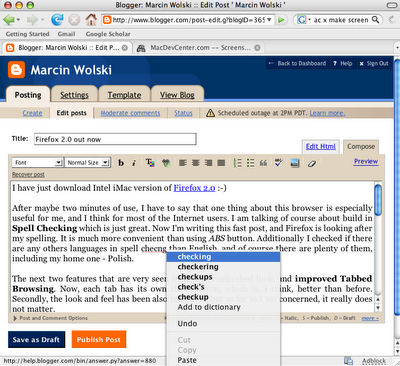Few days ago I was helpping one friend with installation of Kubuntu 6.06 on a PC. I have to admin that personally I would prefer ubuntu, rather then Kubuntu, but he is a fan of KDE environment, so we downloaded it.
I haven't seen Ubuntu yet, so Kubuntu is my first insight into Dapper Drake (DD) family, which has drawn a lot of public attention lately, as being first distribution from Canonical with three and five year support, for desktop and server usage respectively. Since the release, I have read plenty of reviews and opinions about both Ubuntu and Kubuntu. Majority of them was positive about them, and many authors have stayed that (K)Ubuntu is definitively going in the right direction. Due to the fact there is huge amount of available reviews I'm not intending to write one more. Instead, I just want to describe my own experience and feeling about Kubuntu.
To begin with, I need to write that everything went smoothly, and there was not any single problem with installation, even though this PC was more then seven years old.
First positive aspect of Dapper Drake that I noticed is, that the CD you download, both Live and installation CD. Owning to this I could first check if Kubuntu would be working on my PC. I other world's, I could check if Internet connection, printer, etc. was OK. Afterward, knowing that my hardware worked, I started the installation.
Process of installation went smoothly, within surprisingly short time.
After that, I needed to install some additional stuff to my new operating system, so my first thought was to start Synaptic. And I was quite surprised, to find out that there was no Synaptic (graphical package management program for apt). So, no problem, I just run: sudo apt-get install synaptic and there was another surprise - nothing happened. So still, no problem, I open /etc/apt/sources.list and i had to manually unhashed few repositories. Finally, following all those operation I maneged to install what I wanted. Nevertheless, I had and still have mixed feelings about this.
As most of the users I (my friend) wanted to have mp3 support, video codecs, and other popular things, which desktop user must have, and they are not included in (K)Ubuntu by default, on account of licents difficulties. Because of that, I used easyubuntu. This is Python "script that gives the Ubuntu user the most commonly requested apps, codecs, and tweaks that are not found in the base distribution". It worked perfectly, in few minutes I had everything I wanted, and everything was working (audio/video).
Next, I needed to setup printer. I use netwerk HP printer. And there was no surprise, niether. It just worked, after finding it on the list of all printers in configuration panel.
The last stage, was to install VMware server. Unfortunately, this must be done manually, because there are no apt packages. So, I registered (to download vmware you must to register in order to receive free serial number) and I began the installation. There was another nice surprise, everything went perfectly. All process of vmware setup, consists of accepting default parameters :-). That was it:-)
So in conclusion, I strongly feel that Dapper Drake is good or even very good distribution, if you consider only first impression only. However, that little difficulty with Synaptec and apt, can be problem for newbies. I am sure, that my sister, would have huge problems with that, and what's more, I don't see any reasons why it is done like this.
This was my first text about Kubuntu 6.06. I reckon that during further exploitation there will be something new and maybe more interesting to write about.












